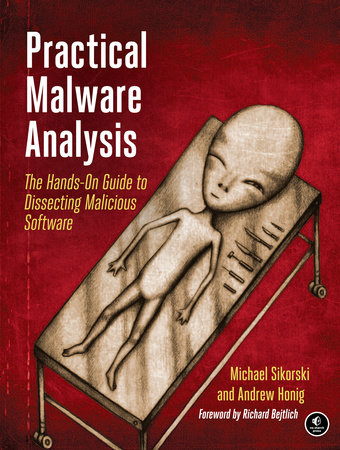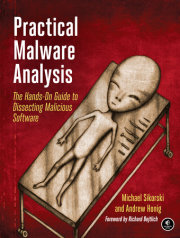Introduction
Chapter 0: Malware Analysis Primer
Part 1: Basic Analysis
Chapter 1: Basic Static Techniques
Chapter 2: Malware Analysis in Virtual Machines
Chapter 3: Basic Dynamic Analysis
Part 2: Advanced Static Analysis
Chapter 4: A Crash Course in x86 Disassembly
Chapter 5: IDA Pro
Chapter 6: Recognizing C Code Constructs in Assembly
Chapter 7: Analyzing Malicious Windows Programs
Part 3: Advanced Dynamic Analysis
Chapter 8: Debugging
Chapter 9: OllyDbg
Chapter 10: Kernel Debugging with WinDbg
Part 4: Malware Functionality
Chapter 11: Malware Behavior
Chapter 12: Covert Malware Launching
Chapter 13: Data Encoding
Chapter 14: Malware-Focused Network Signatures
Part 5: Anti-Reverse-Engineering
Chapter 15: Anti-Disassembly
Chapter 16: Anti-Debugging
Chapter 17: Anti-Virtual Machine Techniques
Chapter 18: Packers and Unpacking
Part 6: Special Topics
Chapter 19: Shellcode Analysis
Chapter 20: C++ Analysis
Chapter 21: 64-Bit Malware
Appendix A: Important Windows Functions
Appendix B: Tools for Malware Analysis
Appendix C: Solutions to Labs




